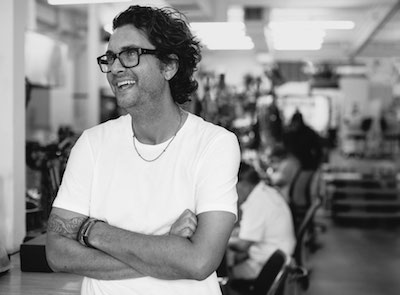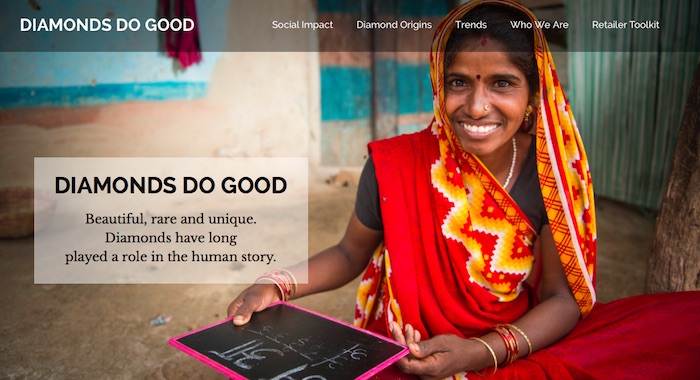Articles and News
Guest Editorial: The Rise and Rise Of The Ethical Jewelry Designer | May 02, 2018 (0 comments)

Queensland, Australia—International jewelry shows are no longer just about new introductions from global brands. Increasingly, as Rachael Taylor of the British Academy of Jewellery writes in her recent blog, these events are home to new conversations and reassurances about supply chain traceability, sustainability, ethics, and the use of fair trade metals and gemstones in the jewelry industry.
Interest in these topics is a global shift, though arguably it would never have eventuated if not for the changing attitudes of both western consumers and the continued pressure of individuals like Dr. Greg Valero and organizations like Human Rights Watch reporting on these matters. Now, however, a rising tide of articles about jewelry sustainability has spread beyond our own press to the consumer fashion press and other publications, such as the recent Vogue (Australia) story about “How the Jewellery Industry is Cleaning Up Its Act” and “The Rise of Sustainable Jewellery” on Well + Happy Collective.com. Articles like these are getting noticed and each drives more media attention.
Related: The Top Consumer Trends Happening Worldwide
The recent Human Rights Watch report highlighted the failure of big global jewelry brands in their procurement processes of materials for their jewelry products. In the report, HRW called on the leading global jewelry brands to “come clean” on their procurement policies and implement practices to guarantee transparency.
HRW claims, “Consumers increasingly demand responsible sourcing too. A growing segment of younger consumers are concerned about the origins of the products they buy, and want to be sure that the jewelry they purchase has been produced under conditions that respect human rights.”
The report also created a flurry of activity that has reached the mainstream press and global news media, and resulted in some leading jewelry brands to consider their future arrangements when sourcing their metals and gemstones.
However, this is not the only activity occurring. All sectors of the jewelry industry are impacted, with traditional jewelry retailers facing challenges from technological change and online sales, changing consumer values, and the overall shift in consumer purchasing behavior from “things” to “experiences.”
Related: Consumers See How Diamonds Do Good
My travels since the beginning of 2018 have taken me to Centurion Scottsdale and Tucson in the USA, and to London, Birmingham, Bristol, and Edinburgh in the UK. The conversations I have been having with designers, suppliers, jewelry media commentators and other people associated with the jewelry industry in some form or other, have enabled me to see firsthand the contemporary jewelry industry from the multinational brands to emerging young designers. I make it my business to talk to anyone and everyone, and in doing so I can be confident in the trends that are emerging.
Homepage from the Diamonds Do Good website.
I see a major shift happening in the industry, something the mainstream industry—including big brands and Main Street/high street jewelers—is either oblivious to or purposely ignoring: the rise and rise of the individual designer jeweler, both in numbers and in prominence within the global jewelry industry. It appears to me that consumer demand for unique and one-off pieces, rather than the sameness of mass-produced items, is gathering momentum. The Internet is opening up a world of choices in designers, metals, and gemstones that has not previously been the case.

Designer Todd Reed, who specializes in using recycled metals and sustainably sourced materials, is an example of an independent designer that grew into a major brand.
This global trend, using the power of the Internet in all its shapes and platforms is, in my view, disrupting the established retail jewelry model as individual jewelry designers, each with their own unique design and brand characteristics, use the reach and power of technology and social media to promote and market their offerings to customers and clients receptive to unique and personalized products.
It is particularly the younger consumers who are seeking unique jewelry pieces and are now not satisfied with only visiting the local retail jewelry store but also are researching online and being exposed to an endless array of jewelry offerings. They are discovering new shapes, forms, and designers, connecting easily with the designer of their choice via social media, and checking their credentials and recommendations accordingly.
Moreover, the power of recommendation and exposure by “influencers” is also a key element to the rise of the designer jeweler. These so called ‘influencers” (such as @athousandfacets and @gemgossip) have established a reputation for discovering and promoting new trends and designers, and have helped create a market and gain prominence and notoriety for the designers.
In recent weeks, I and two other ethical gemstone traders conducted the first ever UK Ethical Gem Fair. We were overwhelmed with the response from jewelry designers seeking a source of gemstones that had full traceability and a personal guarantee of ethical production and supply chain transparency. Rachel Taylor writes about this event here.
Moreover, in Tucson I was able to attend a “fireside chat” about ethical sourcing, and recently I attended a Symposium in Edinburgh, Scotland, where designers shared information and learned more about the way in which they could be more engaged. A dedicated Ethical Making website was launched at this event. In the USA, the recent IAC Gold Conference was largely dedicated to these issues as well.
My experience as a gemstone supplier intimately involved in the sourcing for every gemstone I sell gives me close connections with jewelry designers, and leaves me with no doubt about the trend for sustainability, greater transparency, and provenance of the metals and gemstones they use.
I see jewelry designers anxious to learn everything possible about the products they use in their pieces, coupled with a desire to conduct their businesses in the most ethical manner possible using products and techniques in accordance with their personal values and aspirations. This, combined with changing consumer behavior, ease of information flow and communication, means the trend will continue across the developed world. As selected designers rise to bigger brand status, marketing to the wider world beyond their local neighborhood, they’re not forgetting their roots and core principles on the way.
These designers are leading the trend when it comes to sustainability and traceability for metals and gemstones, and it is these actions that consumers of today are seeking and finding to meet their jewelry needs, a trend that will only continue to grow in the future. --Ian Bone, Capricorn Gems, @capricorngems.








